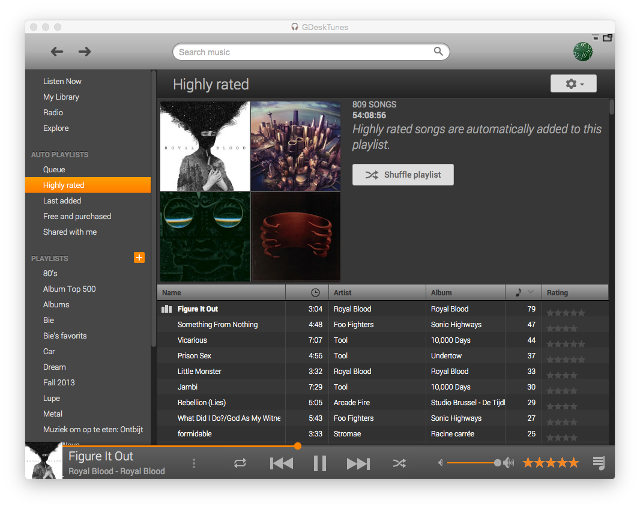


Its important to note that these speakers have been around since 20, so not a short space of time when it comes to technology. These worked great, then Sonos released TruePlay which allowed your speakers to configure themselves based on the space you were in. For example, I have had two Play 3 speakers and the Sub since 2016.
TRAYPLAY GITHUB SOFTWARE
The idea with Sonos was that they wouldn't release new hardware each year, but that the hardware would improve through software updates. But with Sonos you are buying cutting edge features that have not been tried and tested in the long term and are likely to change. If you buy what I could call a standard/proper home theater receiver, it is likely to last you a lifetime.

But I can totally see it as way of reducing their software development complexity and costs, which is not an unreasonable business decision (Sonos isn’t a charity after all). I personally doubt it’s an artificial limitation created for cynical profit pumping. I can sympathise with the difficult technical and product decisions that led to S1/S2. Given what Sonos do, and rather extreme technical requirements of syncing audio to within a millisecond or two over dodgy wifi connections. Not unsolvable, but it wouldn’t surprise me if they tried it, and decided the experience was so crap and confusing, they were better of just making two apps. As for the apps, having them communicate with two different Sonos clusters, and somehow merge the UI sounds like a UI nightmare. Sonos obviously chose option 2, and I can understand why they made that choice. So new and old can no longer join the same cluster. Split make a set of your devices stuck on old software and incompatible with new hardware. Very difficult when dealing with tightly defined high entropy protocols needs for low latency comms, and super tight timing requirements.Ģ.
TRAYPLAY GITHUB CODE
Start running two firmware versions, and some how make your net code forward/backwards compatible. So this means at some point you need either:ġ. Side effect of this choice is that your firmware features become limited by your oldest hardware, even with feature flags, binary size could still be an issue for old devices.

No need to write forward or backwards compatible protocols, every speaks the same language. They want all the speakers to run exactly the same firmware because it’ll significantly reduce the complexity of their net code.
TRAYPLAY GITHUB HOW TO
The leader then figures out how to get your command to the target speaker, which may be via your normal wifi, but could also be via the private Sonos Net mesh network the speakers form. The apps don’t talk to individual speakers, the speakers elect a cluster leader and the app talks only with the leader. I suspect the reason for bifurcation is because the speakers form a cluster on your network. * Better onboarding experience (BLE based, and can take advantage of iOS APIs to share Wifi password) > What new features do you even get with S2 that require more powerful hardware? I'm tired of hobbled functionality, hack the planet. It's a huge problem that should be addressed. Products are rarely solving problems now, they are only introducing new and stupid problems, and not innovating further. The practice of reducing features in something as simple as a music player, a device that is meant for enjoyment shows how grim the concept of a software-driven world should be. They insert ads into music playlists, they often skip more than one track, they don't truly shuffle music, and they also add a ton of frustration with buffering and connectivity issues into the simple process of listening to music, even when I play my locally stored collection of music on them. They more often don't function properly unless a subscription is paid for. Now music players have completely screwed up the model for a music player. The idea that we're paying for devices and apps that are artificially limited and hobbled by others seeking more profit really has me worried about the future.įor example, Winamp ran several years as a music player, although it was not a very profitable operation, it functioned just like every other consumer music player since the 70s, with play, stop, track skipping, fast-forward, shuffle play etc. Every day I'm frustrated by apps that I know were once highly simple and functional.


 0 kommentar(er)
0 kommentar(er)
